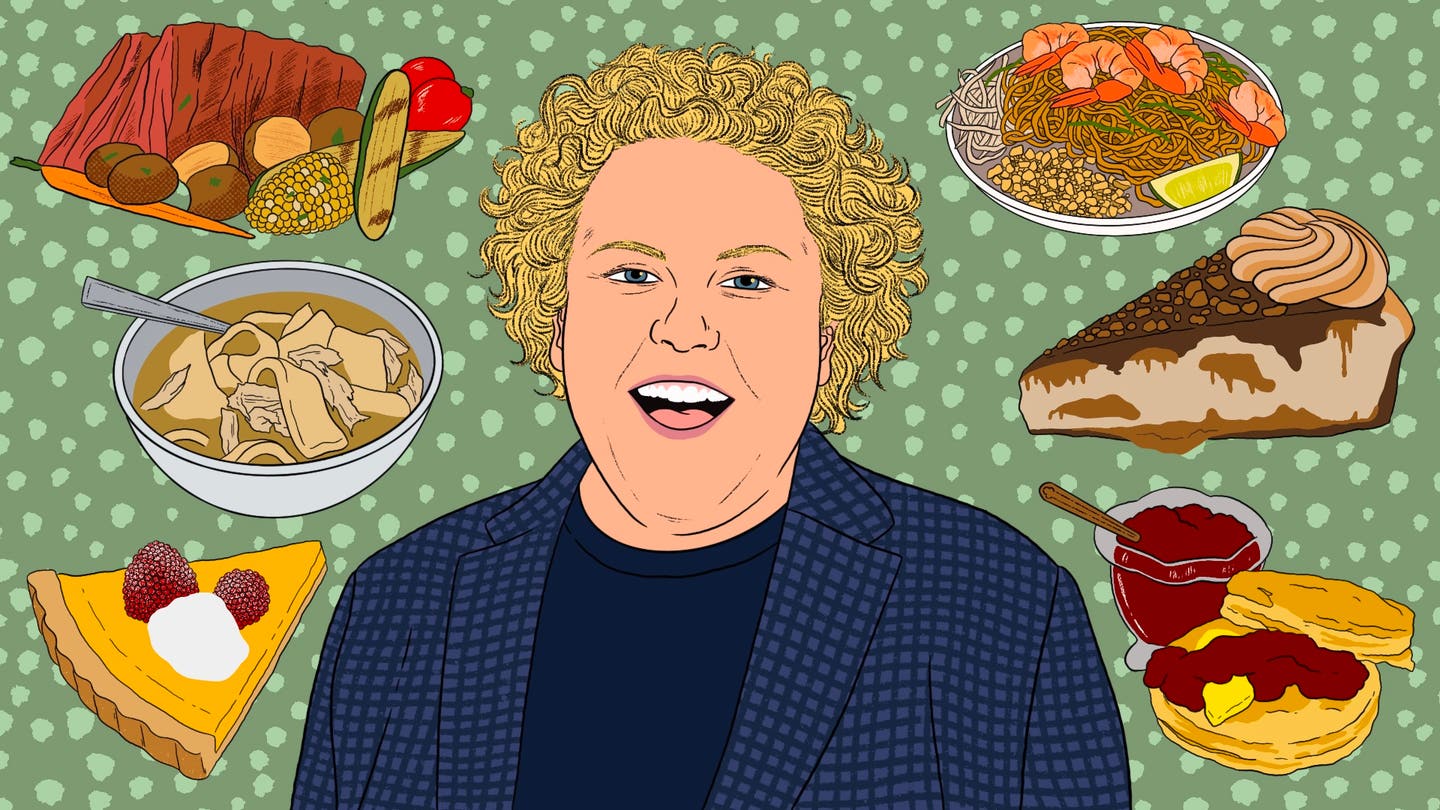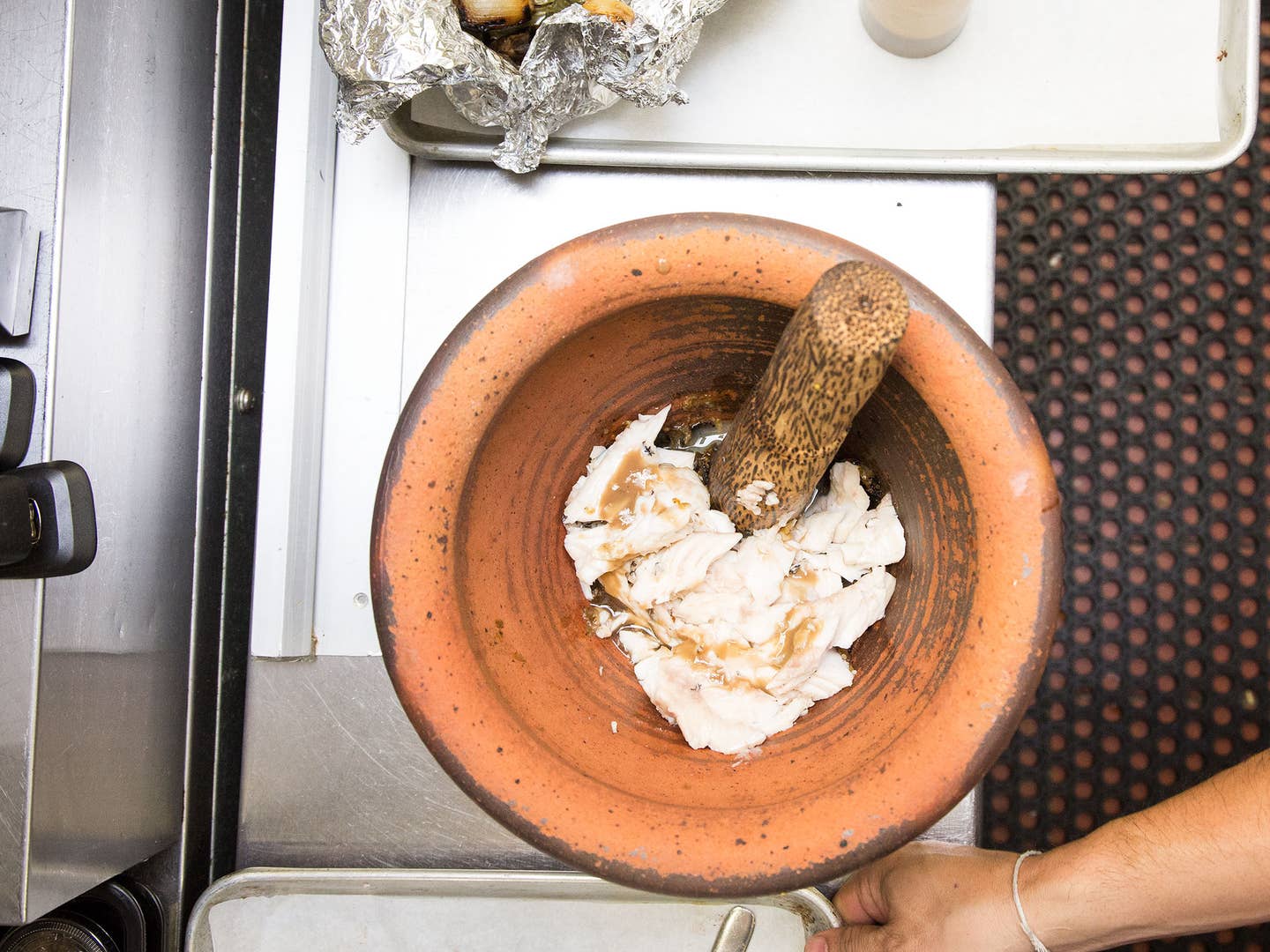
Handfuls of Sticky Rice: A Lao New Year in America
Born in Laos but raised in Kansas, Soulayphet Schwader, chef of New York City’s Khe-Yo, is still teaching his customers that sticky rice is best eaten with your hands and that there’s nothing wrong with a little fishy funk in your dish. But with the celebrations he has planned for the Lao New Year, Schwader thinks he can spread Lao culture and tradition. There are no forks involved, but there’s lots of sticky rice.
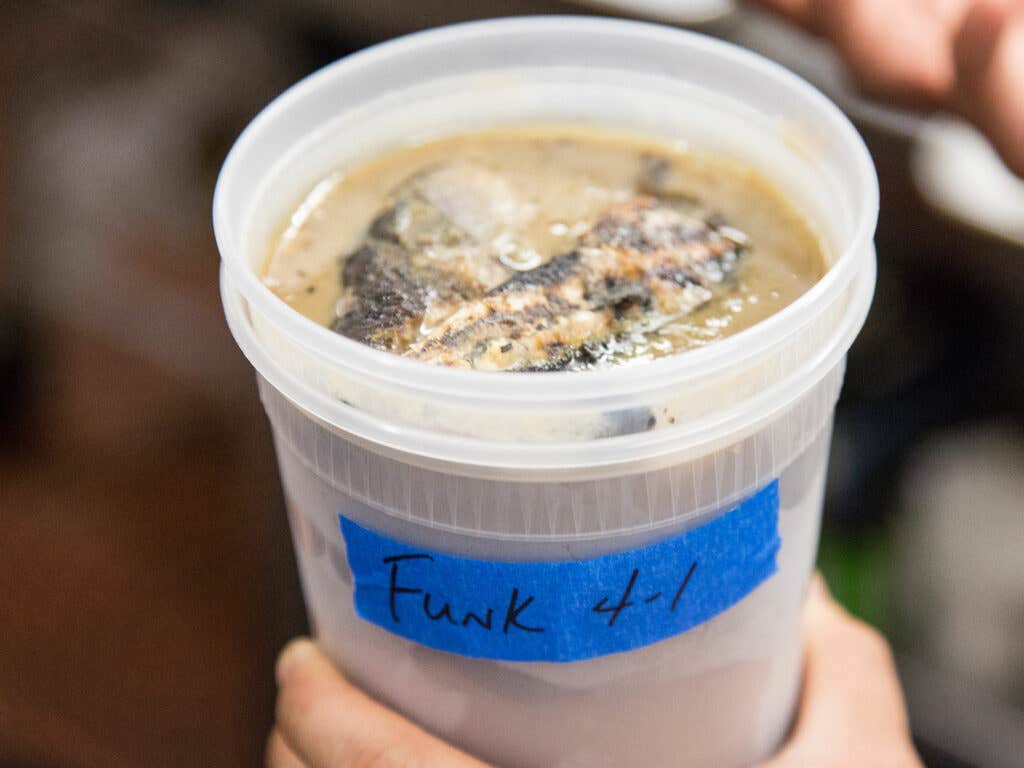
When chef Soulayphet Schwader turns around a little too quickly with a bottle of his homemade fermented fish sauce, coming dangerously close to bumping shoulders with a server, he freezes. The chef looks like someone who just spilled coffee on a stranger. The server wears the expression of the stranger.
"Phet, man, did you get the funk on me?" the server spits at Schwader, who's "Phet" in his kitchen at Khe-Yo, his Lao-inspired TriBeCa restaurant. Schwader turns to me with a playful grin plastered across his face. His staff hates it when he makes "the funk," which is what he calls the thin Lao fish paste padaek, a condiment for which every Lao family has its own recipe. But to him, a dish without the funk is a dish without flavor.
And today, the funk is going on extra heavy. In a tall stone mortar, Schwader squirts the viscous brown sauce over broken up fillets of poached black bass, adding a glug of fish sauce for good measure. The meal he's currently prepping is pouhn pa, or poached bass with charred eggplant, shallots, and chiles. It's a traditional dish that he'll be serving at his restaurant through the week to celebrate the Lao New Year, which starts today.
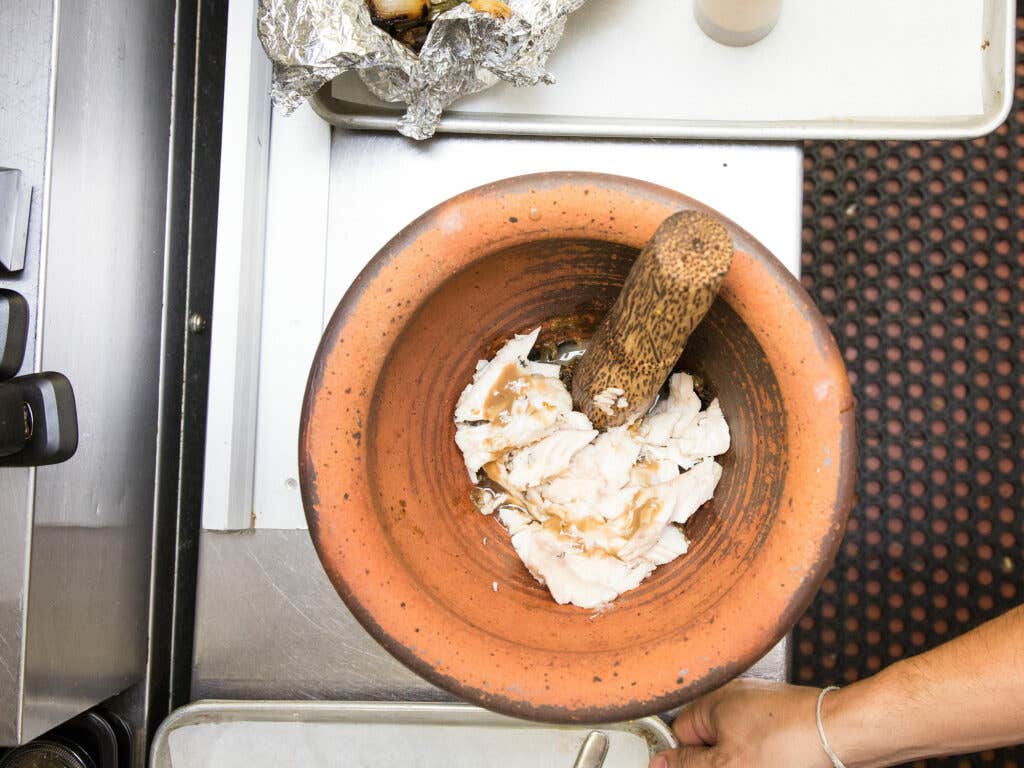
Also known as Songkran or Pii Mai, the Lao New Year is a time of the year when families visit their town's Buddhist temple to bring home-cooked meals and sticky rice to the monks, receive their blessing, and spend time with their community. And because the start of the new year is centered on the idea of washing oneself clean of bad spirits from the past year, there's a lot of water spraying involved.
"It’s funny because now, people spray each other with water guns," Schwader says of the modern day celebration. "You get pretty soaked."
But this year for Schwader, the new year means having his mom, Soubanh, visit him from her home in Wichita, Kansas; hosting a James Beard dinner; and celebrating the holiday through serving traditional dishes at Khe-Yo. Through the dinners, he hopes people will learn more about Laotian cuisine and traditions. And he's excited to celebrate with his customers and with his mom, who will be offering a blessing to every table throughout the week.
Eager to hear more about the holiday, I sit down to a meal with him and his mother. In the middle of the table lie a trio of sauces—roasted eggplant purée, fiery "bang bang" sauce, roasted mushrooms—and a bamboo basket that houses aromatic sticky rice. "Sticky rice is part of our identity," he tells me as he lifts the lid off the basket, squeezes a handful of the rice into a ball, and uses it to scoop up the thick eggplant dip. His mother encourages me to try that one; it’s slick and packed with umami, and she clasps her hands to her chest when she sees me smile.
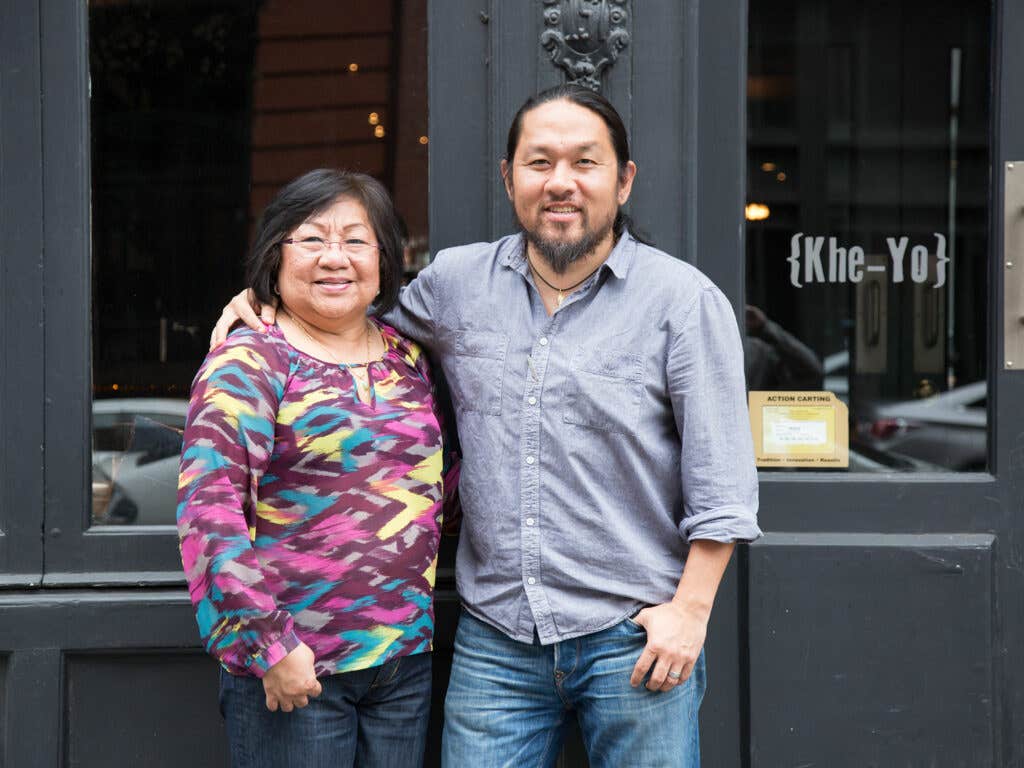
"She gets surprised when I make super traditional dishes and people like them," Schwader says when he sees his mother's expression. "But people want the food how we eat it. She just can't believe people really want the food we grew up eating."
Though he was raised eating spicy chicken larb, sticky rice, and his favorite, meek a tee, a rich curry of chewy rice noodles, coconut milk, and pork, Schwader didn't grow up in Laos. In 1978, when he was only three years old, his family moved from a poor village outside Vientaine, Laos, to Wichita. After the communist party took over the country in 1975, many families no longer felt safe in Laos, fleeing to Midwestern American cities.
Though separated from their homeland, the families brought Lao culture over with them, and in the middle of the Midwest, a Lao community thrived. In Wichita, where Schwader's mom still lives today, there are Laotian groceries, a Buddhist temple, and other Lao families with whom Saubhan celebrates the New Year every April. And with Schwader's childhood diet consisting of traditional Lao foods (except for on Friday nights, when his family went out for a “treat” of McDonald’s or Pizza Hut), he says his family didn't feel as if they had lost their culture.
"I'm so happy I was able to bring my kids to America," Soubanh says looking up at Schwader, who says he was given opportunities here he never would've had in Laos. And through being here, he feels like he's able to spread Lao culture and cuisine. He has no problem finding galangal, lemongrass, and chiles, though he says he's still getting used to the fact that Kaffir lime leaves are $42 per pound.
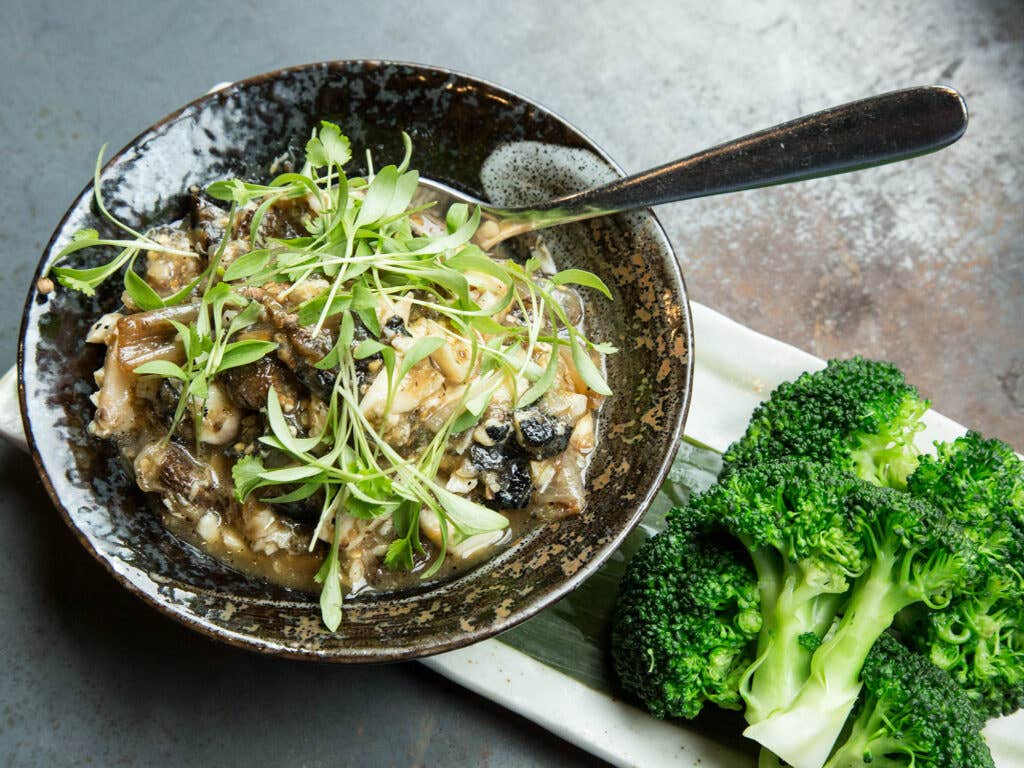
When we're ready to eat the pounh pa, Schwader brings out another basket of sticky rice along with a bowl of the thick fish stew. The charred vegetables are smashed into a chunky paste with white flecks of flaky bass peeking through, and the entire dish is held together by a generous helping of the funk. And, just as we did with the sauces earlier, we dig into the stew using squished handfuls of sticky rice as utensils. For a dish with so few ingredients, the flavor is complex—smoky from the charred vegetables, lightly fishy from the bass, and of course, funky from the funk_._
"People tend to lump our cuisine in with Thai food—though there's overlap, they're different—but one of the bigger misconceptions about Laotian cuisine is that we don’t eat seafood," Schwader says as he uses a piece of steamed broccoli to dip into the bowl. But with the Mekong River running through country, the Lao eat lots of river fish with locally harvested vegetables, rice, and herbs. "The river is essential to our way of life."
At this point in the meal, though, there isn't much talking. We all take turns digging into the sticky rice basket and dunking our handfuls into the fish or one of the sauces, but eventually we all start to slow down. After I claim the last piece of homemade beef jerky and the basket of sticky rice is empty, Schwader clears the table, leaving just Soubanh and myself in the booth. She wears the same smile on her face that she has the entire time I've been with her, and I tell her once more how good the food was—so good that I don't even mind that my hands reek of the funk, but I don't tell her that part.
"When people say they like our food, it makes me so happy," she says, leaning in closer to me as to make her quiet voice audible. "I'm just so proud that he's proud to be Lao."
Keep Reading
Continue to Next Story









